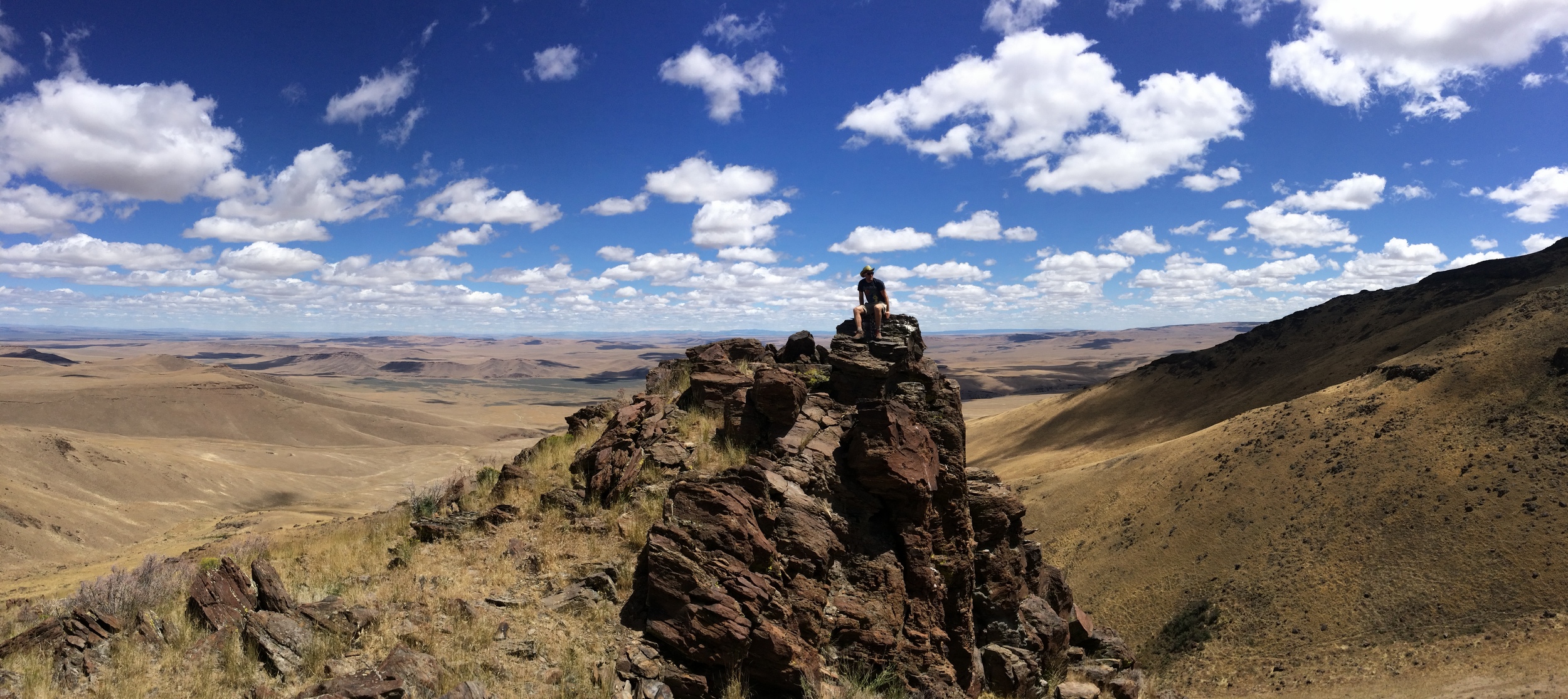FIELD MAPPING
Tom identified and mapped the Rooster Comb Caldera in the Lake Owyhee Volcanic Field, Oregon utilizing GIS. This caldera was initially interpreted to be two smaller calderas that formed upon eruption of two separate ignimbrites. Aided by x-ray diffraction analyses, Tom's work shows that the two previously recognized tuffs are differentially altered portions of the same ignimbrite. Mapping of stratigraphic relationships of the ignimbrite with ring fracture lavas and caldera lake sediments delineate a ~20 x 25 km caldera. This research is published in the Journal of Volcanology and Geothermal Research.
Tom mapping the Mid-Miocene Rooster Comb Caldera along the Owyhee Reservoir in eastern Oregon (Summer 2012).
Tom examining basinal sediments exposed underneath McDermitt ignimbrites in Oregon (Summer 2013).
Tom's Ph.D. work in the McDermitt Volcanic Field (Nevada and Oregon) delineated two previously unrecognized calderas as the sources for the Tuffs of Oregon Canyon and Trout Creek Mountains, two of the oldest known rhyolitic ignimbrite associated with the Yellowstone hotspot. Voluminous widespread coeval flood basalt volcanism preceded and postdated eruption of the Tuff of Oregon Canyon and collapse of the caldera, and led to rejuvenation of the magma chamber that ultimately culminated in the eruption of the chemically-similar Tuff of Trout Creek Mountains. Detailed mapping of contacts and high-precision geochronology on sanidine phenocrysts from alkali rhyolite lava domes has identified caldera margins for both tuffs and the nested younger Whitehorse Caldera. This work is published in the Geological Society of America Bulletin.
GEOCHRONOLOGY
40Ar/39Ar geochronology is a major component of Tom's research. Tom takes advantage of high precision measurements (2σ errors as low as 10,000 years) on the Nu Noblesse multicollector mass spectrometer in the Noble Gas Lab at Stanford University to determine which lavas related to Mid-Miocene caldera systems are pre- and post-collapse when the stratigraphic relationships are unclear in the field. Tom also used this data to document the temporospatial progression of silicic volcanism in the McDermitt Volcanic Field and High Rock Caldera Complex to identify two southward propagating swarms of flood basalt volcanism. Additional work in this realm used high-precision dating of anorthoclase and sanidine phenocrysts in ashes and tuffs interbedded in the basalt flows to determine eruption rates of the Miocene Steens flood basalt event. This work is published in Earth and Planetary Science Letters.
Fused airfall tuff between flows of the Steens Basalt in the southern Pueblo Mountains, Oregon (Summer 2015).
GEOCHEMISTRY
Trace element concentrations can be used to correlate volcanic rocks and document chemical zonation in magma chambers. Tom developed two calibration methods on the ED-XRF at Stanford University; one for mafic to intermediate volcanic rocks and the other for intermediate to rhyolitic rocks. He has used these methods on over 500 samples to correlate ignimbrite outflow sheets and fall deposits and to evaluate temporal changes in magma chamber compositions. Tom is also using whole-rock WD-XRF analyses to correlate large caldera-forming tuffs in the Andes as part of his research on the sources for lithium brine deposits in the South American Lithium Triangle.



